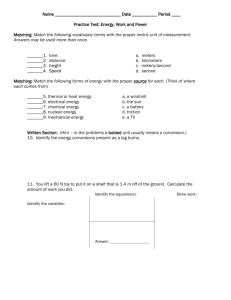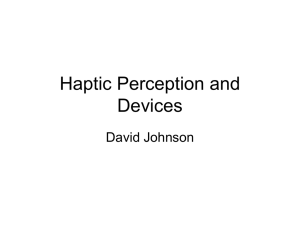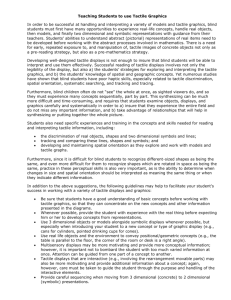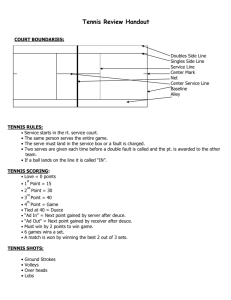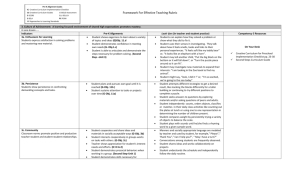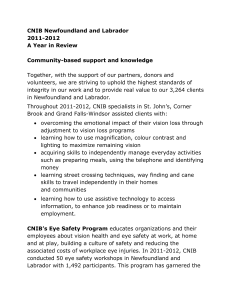Reader`s Guide Where`s My Ball word
advertisement
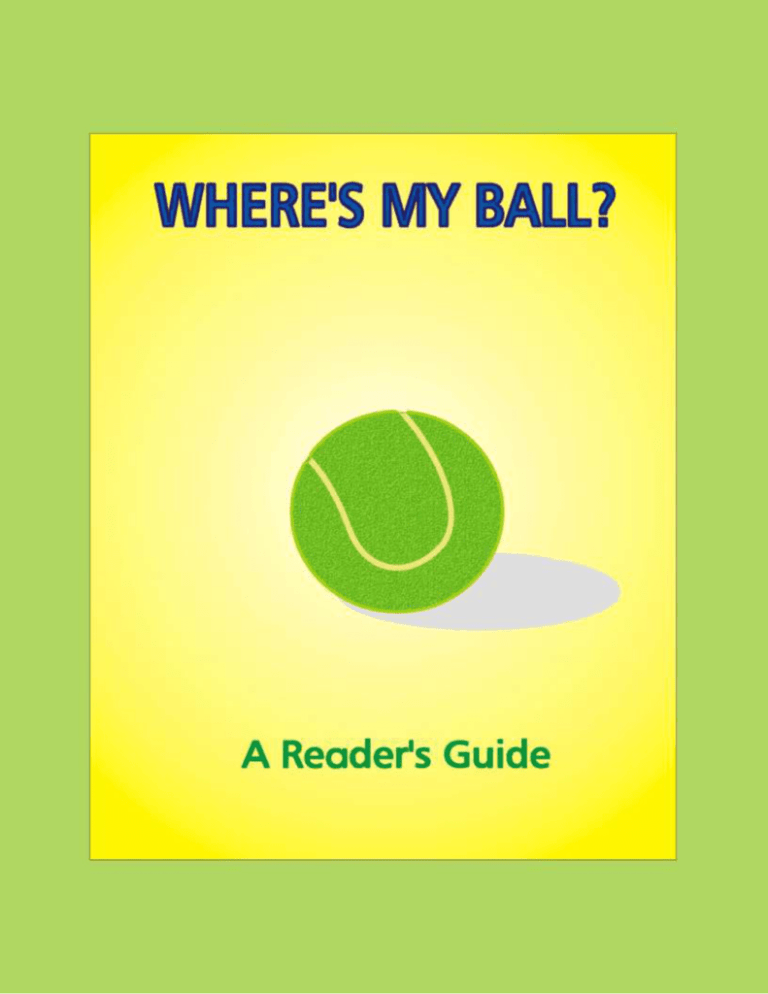
Copyright © 2008 CNIB You are permitted to copy, distribute and transmit this work for noncommercial purposes. You may not alter, transform or build upon this work without obtaining written permission from CNIB. A Reader’s Guide is available for free online at www.cnib.ca/tactilefortots. It is intended to be used in conjunction with the tactile book ‘Where’s My Ball? A Handson Book’ created by Lynn Yamazaki and Constance Craig, illustrated and produced by the CNIB Library, 2006. ISBN 0921122-42-X To inquire about purchasing ‘Where’s My Ball?’, contact: CNIB Library Sales 1929 Bayview Avenue Toronto, ON M4G 3E8 Tel: 1-800-563-2642 Email: sales@cnib.ca Acknowledgements The CNIB Library acknowledges the support of the Canadian Braille Literacy Foundation for the Tactile for Tots program. 2 Where’s My Ball? A Reader’s Guide Table of contents Why do I need this guide? ........................................................... 4 Before opening ‘Where’s My Ball?’ with a child ........................ 5 How does a ball become a bump? .............................................. 6 Reading ‘Where’s My Ball?’ with a child..................................... 7 Other ways to use the book......................................................... 8 What’s next? ................................................................................... 9 Can I get more tactile books from the CNIB Library? ........... 10 How do I find tactile books in your catalogue? ...................... 11 What else does the CNIB Library offer? .................................. 12 3 Why do I need this guide? Children with vision, even babies and toddlers, are exposed to pictures and images whenever they open their eyes. Children living with vision loss will only experience tactile illustrations that are placed within reach. “Don’t touch!” All children are familiar with this phrase, yet it is through touch that children living with vision loss learn about the world around them. This guide will show you safe, fun and important ways to encourage and support a child living with vision loss as they explore new objects and experiences through books. Images make reading and learning fun – that’s why they make picture books for children! Tactile illustrations give children living with vision loss similar exciting opportunities for literacy. These are just a few of the reasons why ‘Where’s My Ball?’ and this guide are such important tools. Just as children must be taught how to read braille, children must be taught how to understand and interpret tactile illustrations. As a child progresses through the school system, science, math and geography books will contain images to help them learn. Maps, graphs, exotic animals, microscopic organisms… Children with vision will access these images through sight; a child living with vision loss can interpret the equivalent tactile illustrations through touch, but only if they have learned how. The techniques that follow are just suggestions. Rehabilitation workers, teachers and parents should all work together to find the technique that works best for each child. 4 Before opening ‘Where’s My Ball?’ with a child Whenever possible, give the child an opportunity to handle and explore real objects before you introduce them to tactile representations of these objects. For example, the book ‘Where’s My Ball?’ is about a ball, and the story takes place in a typical home, with windows, doors and household objects such as spoons, blankets and apples. Before you even start to read the book with a child, show them what these things are. Have they ever handled a whole apple? Do they get a chance to open doors on their own? Give them a chance to explore and experience these things so that they have something to compare to what they’ll read about in the book. Once they know what these real objects feel like, they are ready to learn what they feel like when they are depicted as tactile illustrations. Here is a list of objects included in the book: tennis ball chair apple toothbrush and toothpaste window sippy cup door tennis racket wooden block blanket rubber duck children’s cutlery: fork, spoon, knife basket flower plastic pail, shovel and sieve table 5 How does a ball become a bump? This fuzzy round ball that I can hold in two hands is a bump on the page? How does that work? The next step is to help the child understand how threedimensional objects, things that they can pick up and hold like the tennis ball, are depicted in the book as raised tactile illustrations. On the back cover of this guide you’ll find a picture of a tennis ball. Use scissors to cut along the dotted line and create a hole slightly smaller than a standard tennis ball. Now, from underneath the cover, push a tennis ball part-way through the hole. Let the child feel the flat cover of the guide with the bump of the tennis ball pushing through the hole. This tool can be used to help them understand how something round, like a tennis ball, can be shown as a tactile illustration. This technique was developed by Boguslaw (Bob) Marek, The John Paul II Catholic University of Lublin, Poland. See more information about his ‘Transfograph’ and other tools for introducing tactile graphics, spatial relations and visual concepts to congenitally blind children at: www.hungryfingers.com. 6 Reading ‘Where’s My Ball?’ with a child While you’re reading: Let the child hold the book and help turn the pages. Describe out loud what you see on the page – layout, colours and images. Encourage the child to run their finger along the braille or large print as you read the story aloud. Encourage them to get an overview of each new page by exploring through touch, top-to-bottom and cornerto-corner! Encourage them to explore the tactile illustrations with their fingers (help them to find different textures: rough, bumpy, smooth, etc.). On pages where there is more than one tactile image, help the child find them all and distinguish between them. Help the child trace the outline and details of the tactile pictures and compare them to actual objects (when possible, put a real object next to the tactile illustration so they can feel how they are the same). Use the book to introduce spatial concepts (on, beside, in, behind, under, between, inside, with and under). To help you do this, ‘Where’s My Ball?’ uses a full braille cell (six dots) as a placeholder to indicate a location. ‘Is my ball on my chair?’ The full braille cell is placed above the seat of the chair to help demonstrate what ‘on’ means, and where the child should look. 7 Other ways to use the book You may want to collect some of the items in the book and add them to a cloth bag to make an ‘experience kit.’ Have the child pull the real objects out of the bag as they are mentioned in the book. Encourage the child to act out the activities in the book – have them put the tennis ball on a real chair, or ask them to go to the dining room to check a chair and see if the ball is there. Once the child is familiar with the tactile images featured in this book, try opening pages at random to see if they can use their fingers to tell you what the tactile illustrations on the page are. Or, ask them to find specific tactile illustrations, such as the page with the flower on it. 8 What’s next? Used together, ‘Where’s My Ball?’ and this guide are a start towards helping you teach a child living with vision loss important skills for reading tactile illustrations. Remember, when the child is older the tactile illustrations they’ll be given might represent ‘things’ that they cannot necessarily touch (amoebas or maps of the world)! Learn from others. Read Diane D. Miller’s article ‘Reading Comes Naturally: A Mother and Her Blind Child’s Experiences’ (Go to: www.afb.org and type ‘Reading Comes Naturally’ into the Search Box) Get creative. 3D Paint Pens and Wiki Stix can be used to make tactile images at school or at home. Think about what other common household items you can use, and make books that reflect the child’s daily experiences. Make the leap. A map of Canada is an example of the type of tactile illustrations a child with vision loss may encounter when they’re older. Can you imagine how frustrating it would be if a child’s first exposure to tactile images were a detailed map of Canada? For some children that is exactly the case. Could YOU put your hands on such a tactile and, without looking, identify any of its features, or even the fact that it was a map? 9 Can I get more tactile books from the CNIB Library? Yes! You can borrow or buy tactile books from the CNIB Library. Here’s how: Borrow – Contact Reader Services toll free at 1-800-2688818 or by email at reader.services@cnib.ca to find out how the child can borrow tactile books from the CNIB Library. Buy – Contact the CNIB Library Public Library Sales program toll-free at 1-800-563-2642 or by email at sales@cnib.ca to find out what tactile books are available for sale. 10 How do I find tactile books in your catalogue? To find tactile books in the Library’s catalogue online: 1. Go to visunet.cnib.ca. 2. Select the Search the Library as a Guest link. 3. Select the Advanced Search link. 4. Go to the Search Criteria section. 5. In the edit field labeled “with all of the words”, enter the key words “tactile books”. In the combo box labeled “in”, select Subject. 6. If you want to limit your search results to uncontracted or contracted braille, go to the Formats section and select the appropriate format(s). Your choices are: Braille (contracted or uncontracted) PrintBraille (contracted or uncontracted) 7. Activate the SUBMIT button. 8. A Search Results page will display a list of tactile books. To order tactile books for a child, copy and paste your search results into an email and send it to reader.services@cnib.ca. The child can order books online for delivery by mail if they log in with their user name and password for the Children’s Discovery Portal. See ‘What else does the CNIB Library offer’ for information about this service. 11 What else does the CNIB Library offer? The CNIB Library has lots of cool books, resources and programs for kids to make reading more fun and accessible than ever! We have contests and clubs and books in every size, shape and format. Anyone registered with CNIB can access the CNIB Digital Library, and young readers between the ages of six and 14 can also use the Children's Discovery Portal with online accessible games, moderated chat rooms and lots of ageappropriate information and resources. Listen to the Audio Introduction to Library Service (17 minutes) at www.cnib.ca/library. Contact us: Reader Services 1-800-268-8818 reader.services@cnib.ca www.cnib.ca/library 12 13
